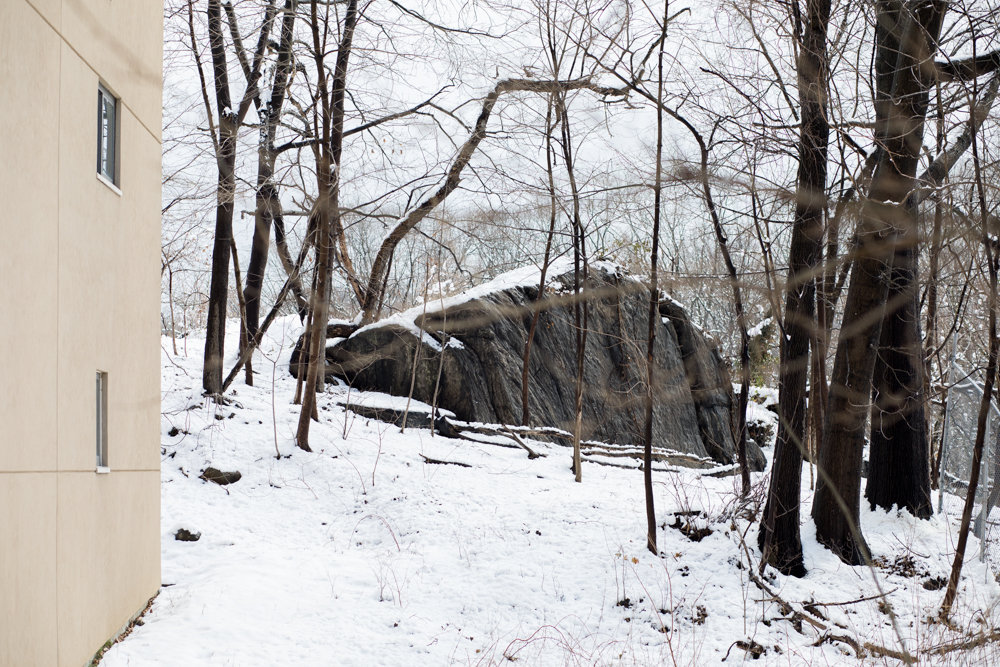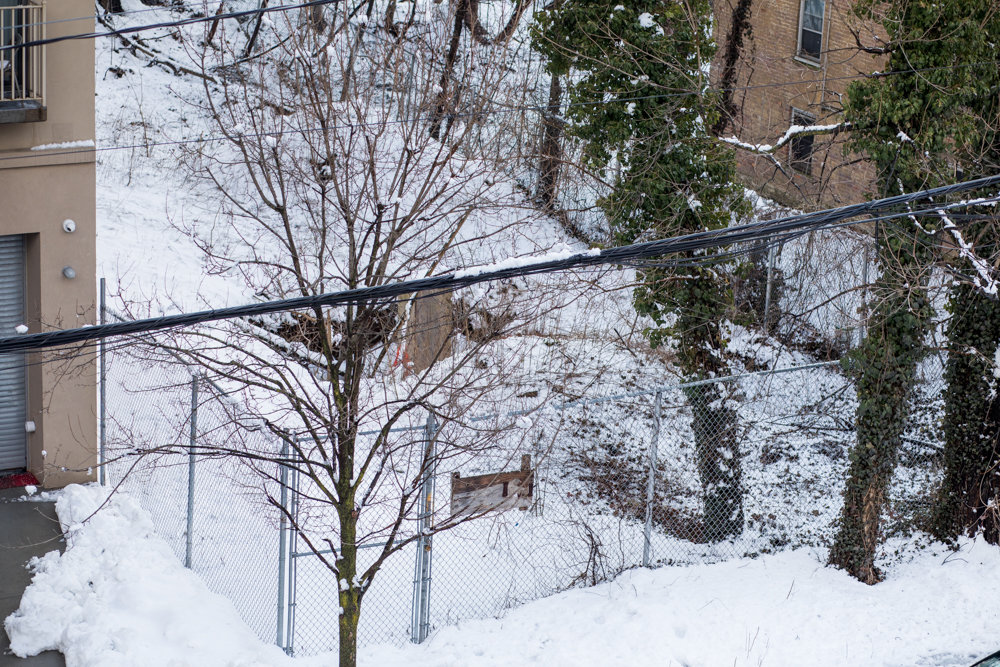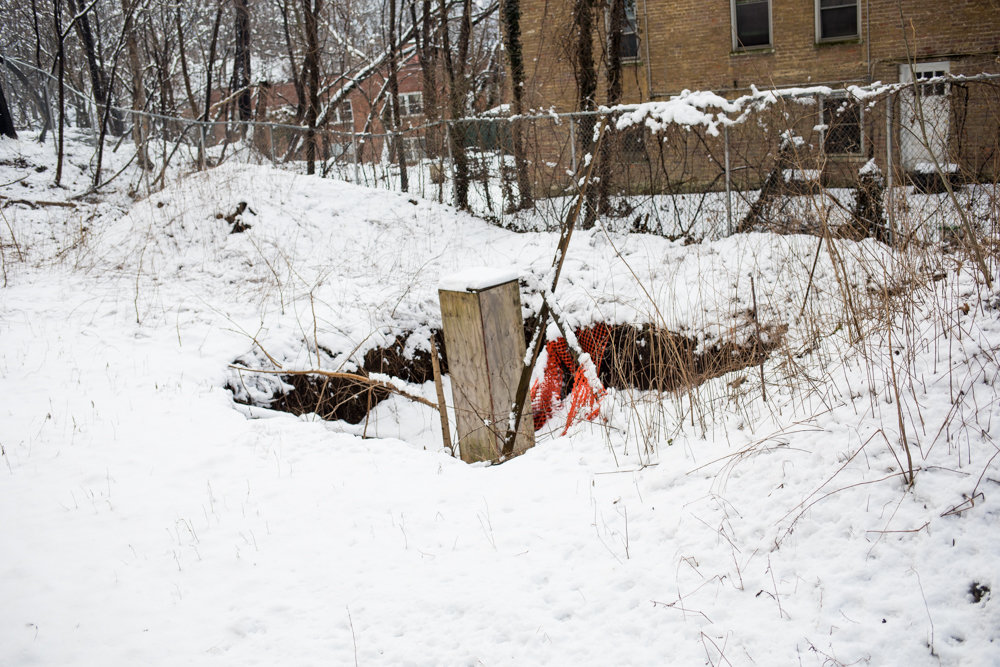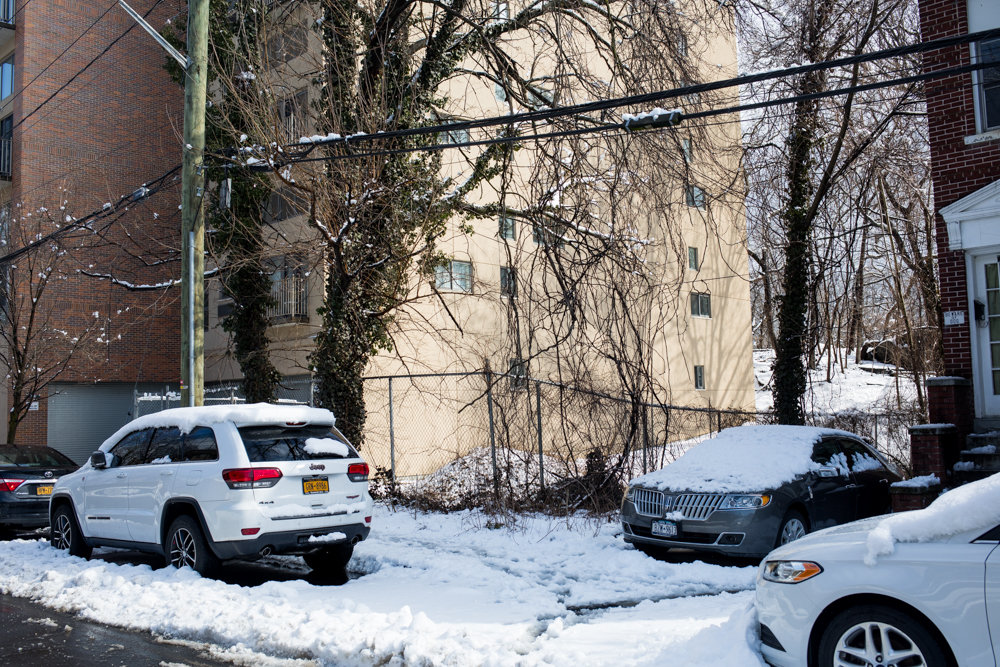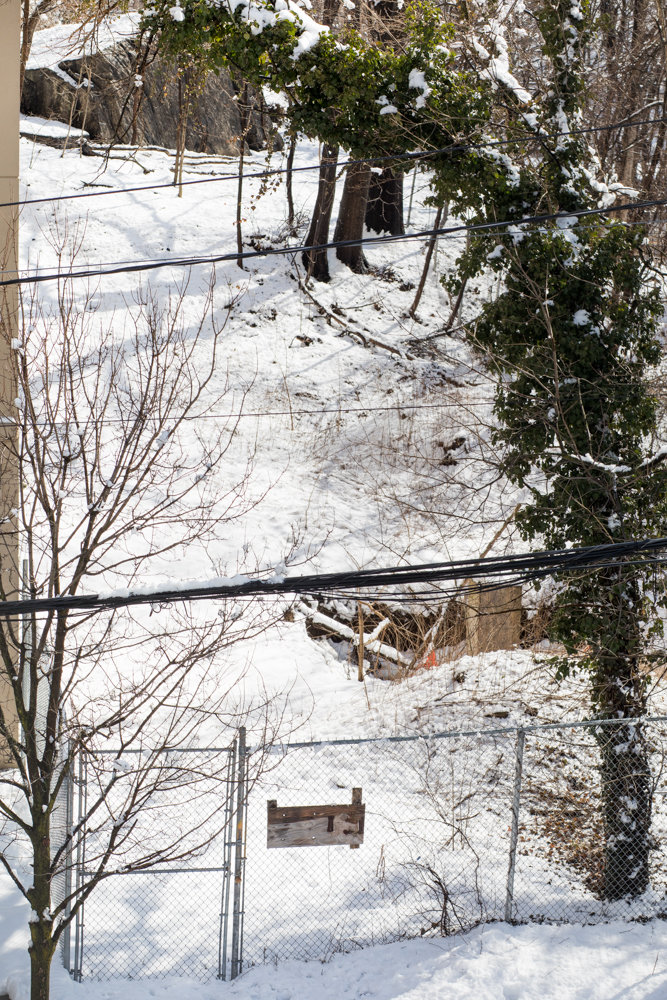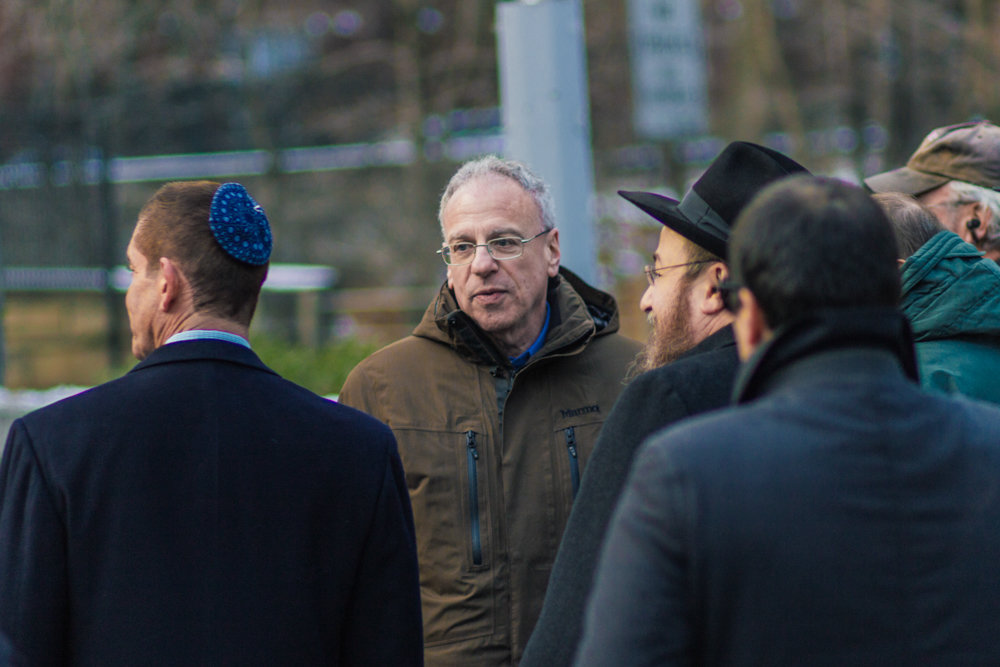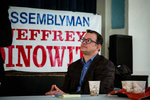Between a rock and a hard place
Officials cool to developers’ claim that outcropping warrants a zoning variance
A pair of developers looking for the city’s help to build a nine-story mixed-use building at 5278 Post Road might have found a new hurdle beyond the rock outcroppings on the property they believe should give their plan special consideration.
Three months after standards and appeals board executive director Carlo Costanza says the plans by Petra Broadway LLC and Destem Realty LLC to construct such a building on the vacant lot not far from Broadway in North Riverdale was outside the scope of zoning there, the developers returned to the board last week hoping city officials would grant them a variance to the zoning that would allow building to continue.
And why should they get that variance? According to what was shared at the Feb. 26 hearing — the rock outcroppings they say would make it difficult for them to build in any other way.
Yet, Community Board 8 land use chair — and the board’s pro bono counsel — Charles Moerdler challenges that claim, saying the developers’ own lawyer, Mitchell Ross, conceded construction could take place in that area without zoning variances. Ross, he told The Riverdale Press, “admitted in writing that without a zoning variance, there were at least two developers who were prepared to build just on Broadway — without touching Post Road, without seeking any variance at all. So the hardship could not have been such as to make it impossible to build. And that, for them, in my view, is a devastating admission.”
Neither Petra nor Destem returned multiple requests for comment. But Ross told the standards and appeals board at the hearing the developers may need up to several months to explore all the issues raised during the review process so far.
Costanza told The Press last December that based on current plans filed with the board, the building would include 120 residential units plus a medical facility at the cellar level and a commercial pharmacy in the sub-cellar.
The number of units exceeds what’s permitted for building in R-6 zoning, Costanza determined last December. The plans also go beyond the allowed maximum residential floor area and height requirements. And the commercial aspects like the pharmacy and medical facility would be inconsistent with the zoning district.
Councilman Andrew Cohen penned a letter to the board opposing the plans, saying it would unilaterally — and negatively — alter the neighborhood’s character. Variances should be used sparingly, he added, for unique cases, but he believed existing rock outcroppings wasn’t one of them.
“If they had bought the property and it turned out, unbeknownst to them, there was an underground stream, it might justify a variance,” Cohen told The Press last November. “But the condition on this property is as plain as the nose on your face.”
That point was shared by Assemblyman Jeffrey Dinowitz, who also came out late last year to oppose the plans.
“It was well-known and obvious to anyone who could see that the site was covered with extensive rock outcroppings,” Dinowitz said. “These rocks have been here since the ice age. They are not new.”
It’s “outrageous” to ask for a variance for something that was “obvious on the face of it since Day One,” Dinowitz added.
The developers should’ve taken into account that around 75 percent of the site is covered in rock outcroppings, and weighed what that would mean for turning a profit on the land before agreeing to buy it.
The developers appear to have an uphill battle ahead of them. During last week’s hearing, some standards and appeals board members like chair Margery Perlmutter questioned whether the developers really were beset by a “unique physical condition” that would justify granting a variance.
And if the developers can’t convince the board there’s a significant, legitimate condition to ask for a variance, Perlmutter believes their argument fails to pass muster.
No case?
That’s why the board didn’t even dig into meatier questions like whether the developers should set the building back further, Perlmutter said. That would’ve come later when delving into details — like allowing for more or less parking and such. But the board basically held off from such finer points, because they felt the developers didn’t even have “the beginnings of a case.”
Which means the developers have their work cut out for them. Their task for the next hearing, Perlmutter said, is to prove site conditions like the rock outcroppings justify a variance to build the nine-story structure.
Such a structure would be “severely out of character” with the surrounding neighborhood, Dinowitz said. And introducing 120 new units into that neighborhood just south of West 253rd Street would strain existing infrastructure that already is stretched quite thin. Nearby major thoroughfares like Broadway and Henry Hudson Parkway already are clogged with traffic. Plus, local schools are overcrowded and the sewage system overburdened.
“There is nothing unique about this application that would justify its approval, aside from the sheer boldness of these developers attempting to circumvent long-established guidelines,” the Assemblyman said.
The next hearing is set for June 11, and Moerdler — in his dual roles as land use chair and attorney for the board — wouldn’t miss it for anything. Granting the variance request “sets a precedent,” he said.
“Once you have the precedent, everybody else is going to do the same damn thing.”

